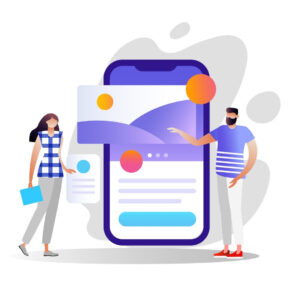Lead Capture: 5 Simple Steps to Level Up-Conversion Rate
All businesses rely on delivering products or services to customers. To do so, sales teams must turn leads into sales. Without the ability to retain and acquire customers, revenue stops. In order for sales representatives to perform this vital function, they need a lead capture method that provides consistent results.
What Exactly is Lead Capture?
Lead capture includes the process of turning potential leads into paying customers by retaining some sort of customer information. Examples commonly include garnering sales from web traffic by asking for an email address or other contact information. This information allows for a continued marketing campaign towards each lead. Lead capture mechanisms create nurtured leads more likely to generate sales.
The most common lead capture mechanisms include:
Web to Lead
Web to lead refers to retaining customer information from a website. This method includes pop-up forms that prompt website visitors to offer their contact information. Storing this visitor information allows your business to contact them with offers, hopefully resulting in a sale.
Call to Lead
The call to lead mechanism focuses on gleaning contact information through a telephone call. Cold calls take the most common form of this method. Sales representatives must foster interest in the product during a phone call. Calls focus on setting up a future meeting date or capturing more information from the lead.
Email to Lead
Capturing a lead through email means getting the lead to provide additional information or follow a link. Emails can include information such as an ongoing sale or limited-time offer. If interesting enough, the lead will follow the listed instructions to contact a representative or examine some sort of product catalog.
Social to Lead
Social media leads to increased sales through targeted advertisements, influencers and shared posts by customers. Targeted ads generally offer a product or service within the range of the lead’s interest. Shared posts and influencers act as trusted sources for leads to follow the advice of and interact with your business. Direct all leads from social media to a sales representative or website to capture contact information.
Does Your Traffic Buy?
Web traffic means nothing if it does not produce sales. Many website visitors will browse for a little bit and then get distracted by something else. Lead capture mechanisms retain information from visitors to present them with additional offers in the future. Making those lead capture mechanisms work drives your business to succeed.
Web visitors might not buy with their first interaction. However, if you can obtain their information you will get more opportunities to make a sale. This is where lead capture comes into play.
We break this down into five important steps, and how you should organize your lead capture strategies accordingly.
Step 1: Purpose and Objective of the Lead Capture
Keep in mind the goals you wish to achieve from lead capture. Having a clear objective helps keep from becoming overwhelmed or distracted. When considering the purpose of the lead capture mechanism, keep the marketing funnel in mind.
The marketing funnel details a lead’s course of action from awareness to sales. Traffic stars high and whittles down into smaller pools as you close in on a sale.
Leads progress through the sales process and the marketing funnel simultaneously. There are three main stages of a marketing funnel:
Top of the Funnel (ToFu)
The top of the funnel includes the first few interactions with a lead, including awareness of your product or service. As a general rule, awareness applies to more leads than any other stage. The funnel moves from awareness to interest and loses a small portion of the aware leads. The number of leads continues to decrease with each stage.
Middle of the Funnel (MoFu)
Leads in the middle of the marketing funnel express consideration and desire. Here they wish to know more about your product and require persuasion. Leads within this stage of the funnel need additional nurturing in order to push them towards a sale.
Bottom of the Funnel (BoFu)
In the final stages of the funnel, the few remaining leads make an evaluation and then, hopefully, a sale. Lead capture mechanisms aim to guide each and every lead through the funnel towards a sale. Capturing leads gives your business more opportunities to guide them into the marketing funnel towards the bottom.
Keep the marketing funnel in mind when introducing a lead capture mechanism. Driving towards the goal of a sale keeps your sales and marketing teams focused on the status of each lead. Knowing the location of the lead within the funnel allows you to use the correct sales tactics.
 Step 2: Build a Good Lead Generation Offer
Step 2: Build a Good Lead Generation Offer
Leads often hesitate when it comes to giving out their contact information. With so many cold calls, email promotions and other sales methods, leads can feel overwhelmed. Stand out from the crowd by building a lead generation offer that grabs their attention.
Most lead generation offers to ask for email addresses. An example could be joining the company newsletter for a discount on the next order. The lead need only to offer their email address for the discount. From there, your business can create a lead nurturing email campaign to gradually persuade the lead into a sale.
Also called lead magnets, these discounted or free offers help retrieve contact information. Lead magnets also help foster conscious awareness of your company. So the next time the lead feels the need for your product or service, they will go to you first.
Lead magnets come in many forms. Examples of different types of lead magnets include:
eBooks
Customers love free information. By offering a free eBook in exchange for an email address, you can educate leads regarding your industry. eBooks give insight into your product and act as a kind of extended brochure.
Education and convincing leads through a free eBook make them aware of your product or service. That awareness can grow into interest, pushing leads into the marketing funnel. Since you already have their email address you can continue contacting them with additional offers and promotions.
Content Upgrades
Convince a lead to give their contact information in exchange for a content upgrade. This includes additional access to information or an exclusive type of club. The content must interest and engage with the lead to qualify as an enticing offer.
Exclusive access to additional content for nothing more than an email address works for many lifestyle brands and businesses. Continuous engagement with the community increases exposure to more products and services. Coupled with a solid email marketing campaign, content upgrades help retain customers and increase brand loyalty.
Free Tools, Generators and Calculators
In exchange for their email addresses, leads receive a small service or product. Businesses that offer free quotes or consultations in exchange for contact information engage in this common lead capture technique. Free tools help expose the lead to your service, generating awareness and interest. With their email address, you can continue to stay relevant in their mind when they require the services you offer.
Sometimes customers shop around for free quotes. Should your company have the best offer, customers will see that and enter into the marketing funnel. These free tools and generators give the customer something tangible in exchange for their information. Some companies go so far as to offer free samples of their products. Whatever the case, this lead capture technique gives the lead an enticing deal.
 Step 3: Create a Lead Capture Page
Step 3: Create a Lead Capture Page
The complexity of your lead capture page depends on what information you need. Many lead capture pages ask solely for an email address. Others request information relating to the lead’s preferences for customized deals and offers.
While a simple lead capture page increases the likelihood of receiving that information, it does not help you understand that lead any better. On the other hand, ask too many questions and you will scare the lead away.
Lead capture pages must ask only for relevant information, a first name and an email address at the very least. However, a few other questions to find the service or product most relevant can also help. These specific questions make the lead feel well attended to and keep them interested.
You must capture the lead’s contact information before offering any discount, free tool or extra content. The lead capture page acts as a barrier to those offers.
Step 4: Use Pop-Ups
Websites of all kinds and from all different industries utilize pop-ups to try to get contact information and subscriptions. As soon as a visitor enters a site’s landing page, a window opens requesting their email address. Pop-ups commonly ask users to sign up for a newsletter which they would receive in their email inbox.
Pop-ups sometimes give website visitors an offer to subscribe to the website’s service at a discounted rate. News media websites often use these kinds of pop-ups.
Pop-ups have become so common that many website visitors close them as soon as the window opens. Since many pop-ups open immediately, visitors do not have enough interest yet to read them. Instead, they sometimes become annoyed at a pop-up opening too quickly.
Pop-ups still offer the most exposure for lead capture since all web visitors see them. When considering adding pop-ups to your website, look at options for when the pop-up will open. Sometimes you can have a pop-up open after a set amount of time or a certain number of pages viewed.
These delayed pop-ups give visitors the time to examine your site more thoroughly and become more interested. Should your site capture their attention, leads will fill out the information requested by the pop-up. Of course, this comes with the trade-off of less visitors seeing the lead capture mechanism. But if more visitors use the pop-up, the trade-off is well worth it.
Step 5: Optimize and Test
Lead capture mechanisms must retrieve some sort of contact information. Depending on your industry, certain lead capture mechanisms will work better than others. To find the best mechanism for your business, you need to test and experiment.
You might find that website pop-ups work well enough to capture information. But if they do not, try working with them to open at different intervals. Experiment with call to lead, web to lead, social to lead and email to lead methods. The wider your net, the greater your chances of success.
For website capture pages and pop-ups, use A/B testing. A/B testing gives a participant two variations of a web page and they chose which one they like better. Use a large sample size to obtain more accurate data. Additionally, have a tournament of sorts with many different site variations to find the absolute best.
Toy with the utilization of each method. Just because something fails once does not mean it will never work. Give each method a fair shot at success. Rework emails and call scripts to find what works. Discount any method only after sufficient testing.
Just because a method works does not mean it is perfect. Continually try to optimize your lead capture mechanisms. The better they work, the more leads you can follow up with which increases your conversion rate.
Wrapping Up
Lead capture mechanisms give your business more opportunities to interact with leads. Instead of losing a lead after they do not make a purchase, you can contact them further with more offers. Lead capture mechanisms work well to put your business at the forefront of the lead’s mind.
Finding the right lead capture mechanisms takes time. With so many approaches, the task can feel overwhelming. Thankfully, you do not have to go it alone.
Selling Revolution specializes in increasing your leads to give your business a fair shot at success. Schedule a 20 minute introductory phone call today, and get started driving your business to the next level.
The sooner you get started, the sooner you can pursue leads with increased vigor.



 Step 2: Build a Good Lead Generation Offer
Step 2: Build a Good Lead Generation Offer Step 3: Create a Lead Capture Page
Step 3: Create a Lead Capture Page